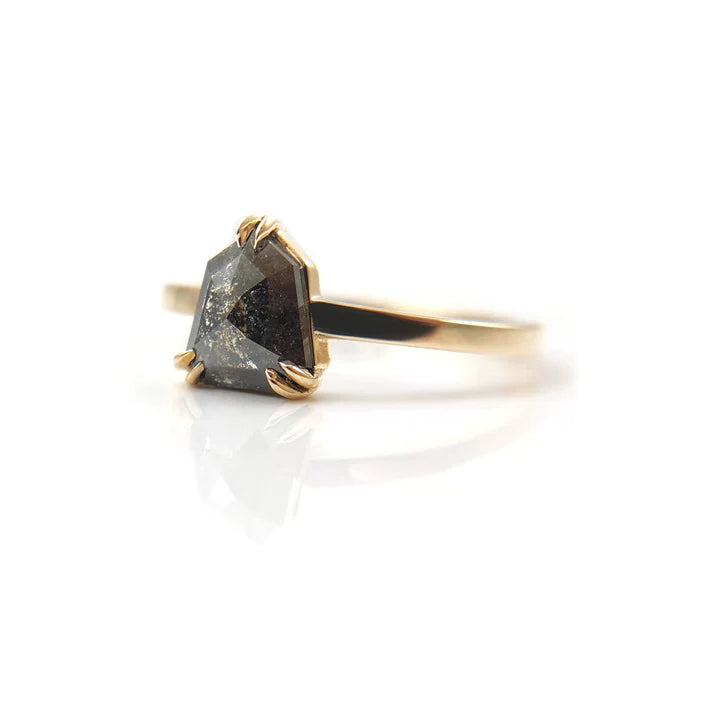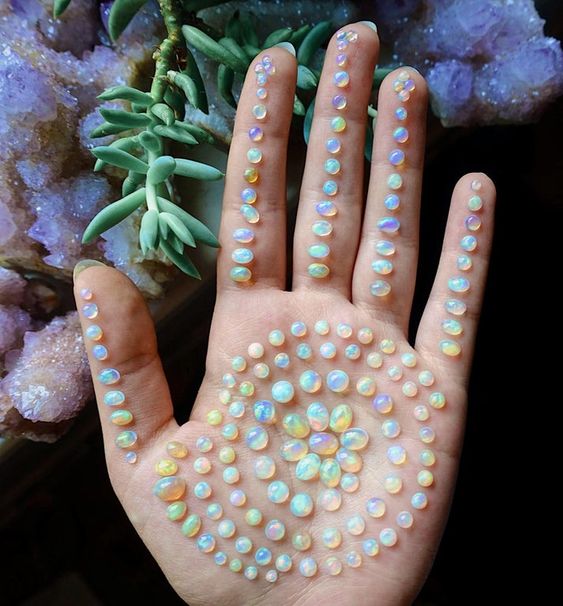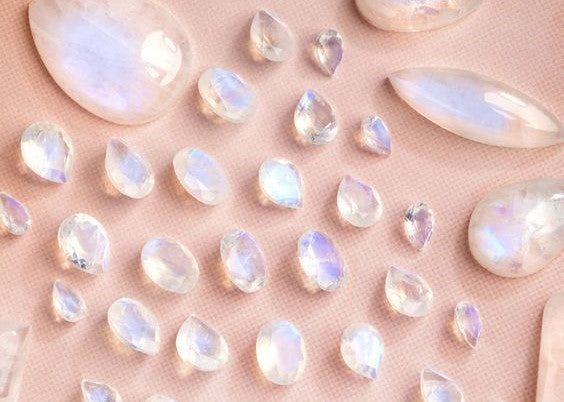Appropriate Stones for Engagement Rings + ones to AVOID
Choosing a durable stone is crucial when searching for the perfect engagement ring. This is an exciting milestone in any relationship, and as a symbol of a lifelong commitment, it’s important to select a stone durable for daily-wear. While clear diamonds have been the most traditional choice for engagement rings, there are plenty of other options that make a beautiful and unique statement. Let's explore some great alternative stone options appropriate for engagement rings VS. (contrary to some trends) ones to definitely AVOID!

Appropriate Stone Options
Sapphires are the second most popular choice for engagement rings after diamonds, and for good reason. They come in every colour of the rainbow, with blue being the most popular. Sapphires are very durable with a 9/10 rating on the Mohs scale of hardness. They are also available at a variety of price points depending on the size and quality. Check out this teal sapphire ring!

Salt and pepper diamonds have become increasingly popular in recent years as an alternative to traditional clear diamonds. Their unique appearances range from black, grey, and white inclusions that create a speckled, 'salt and pepper' quality. Yours is sure to be one-of-a-kind with distinctive character. Salt and pepper diamonds are much more affordable than traditional colourless diamonds, making them an excellent choice for those sticking to a budget. The beautiful inclusions that create their unique appearance are considered 'imperfections' in diamond grading to determine their value. Since colourless diamonds are evaluated based on the lack of inclusions, each inclusion in a salt and pepper diamond is seen as a 'flaw,' therefore making them more budget friendly. Check out this geometric-cut salt+pepper ring!
A well-cut salt and pepper diamond will be just as durable as a traditional white diamond, with a rating of 10/10 on the Mohs hardness scale, as long as you're selecting one that is high-quality! Be mindful of surface-reaching inclusions (inclusions that extend to the outside surface of the diamond). These can be found in both salt and pepper diamonds and clear diamonds, but because salt and peppers have more inclusions overall, surface-reaching inclusions are more common. Surface-reaching inclusion can be a risk if they are located in a prominent place (on the top surface or exposed area where it can easily be bumped or hit). Your best bet in finding the most beautiful, durable stone is to work with a trusted jeweller who will source the highest quality stones and do all the vetting / inspecting for you.
Alexandrites are a rare and valuable gemstone, prized for its unique colour-changing properties. In natural daylight it appears green and in incandescent light it changes to a purplish-red. Alexandrite has a hardness of 8.5/10 on the Mohs scale, which makes it a great choice for daily wear in an engagement ring. Due to their rarity and beauty - natural alexandrites are the most expensive coloured gemstone and can range from a few thousand to10s of thousands of dollars and more for a good quality stone. Lab-grown alexandrite alternatives are available that are more affordable, however the colour-changing intensity may not compare to a natural one.
Spinels are a gemstone that have been gaining in popularity as an alternative to traditional engagement ring stones due to its durability, beauty and affordability. They're a relatively hard gemstone, with a rating of 8/10 on the Mohs scale, making them a practical choice for everyday-wear. In terms of appearance, spinels can be found in a variety of colours, including pink, purple, blue, and solid black. Spinels are a very affordable stone option (for now - until the demand grows). You can get a larger stone for your budget if size is a preference.
Heirloom stones are a wonderful idea to re-use in engagement rings, adding sentimental meaning with connection to family. Recycling an heirloom stone is the most ethical choice when creating a new piece. By reducing the demand for newly-mined stones, the ring is a more sustainable choice for the environment. This is also the more cost-effective option - saving money on the stone can allow you to customize the setting or add other personal touches to the ring, which can be a significant consideration for those working within a budget. With all those lovely benefits said - heirloom stones should always be inspected first to determine if they're suitable for repurposing to ensure it will last for generations to come.

Stones to Avoid
Opals are a beautiful and unique gemstone, but they are not recommended for engagement rings for their lack of durability. Opals are a softer stone, with a rating of 5.5-6.5/10 on the Mohs scale. They are delicate, and being sensitive to heat and moisture can cause them to easily chip or crack. Opals are also especially prone to cracking if they are exposed to extreme / immediate temperature changes. So, considering where I live (Toronto) in our Canadian climate - simply going from in or outside in the wintertime can in fact shock opals. I would highly recommend going with a more durable stone for an engagement ring or a ring intended for everyday-wear. For opals set in other jewellery - take extra care to ensure that your stone is protected and well-maintained over time.
Emeralds have been a popular choice in engagement rings for their striking green colour and symbolism of rebirth and love. However, they're not actually a very practical choice! Despite their medium-high ranking of 7.5-8/10 on the Mohs scale for hardness, they are in fact very brittle and can chip. If you do choose an emerald for your engagement ring, be sure to take extra care and be mindful. A bezel setting would be best to protect the edges of the stone. If it's the rich green colour you are drawn to - go with a sapphire as a more durable alternative - they come in all shades of green from pale to deep dark colour variations to choose from.
Pearls are absolutely not recommended for engagement rings. They are soft and delicate, with a rating of just 2.5-4.5/10 on the Mohs scale. They can be easily scratched, dented, or damaged with everyday wear. Pearls are also sensitive to chemicals, including perfume, makeup, and cleaning products. Resulting in them becoming easily discoloured or damaged by exposure to these substances.

Moonstones are a beautiful gemstone with their unique iridescent sheen and colour flashes, but they're a relatively soft gemstone - with a rating of 6-6.5/10 on the Mohs scale. They can easily scratch or chip with everyday wear, as well can be damaged by exposure to high temperatures or chemicals, such as chlorine or perfume. For a more durable alternative - choose an 'icy' diamond from the salt and pepper diamond family to achieve a similar appearance! You can find amazing variety with salt and pepper diamonds in all levels of transparency and inclusion density. They can range from transparent to opaque, and can be milky, cloudy, icy, with or without distinct speckles. There are even some out there with unique opalescent flashes of colour.
There are many options to consider when choosing a stone for your engagement ring. Download our FREE PDF cheat-sheet of safe stone options VS. ones to avoid below to help you make the best selection! An engagement ring is an investment and it's important to choose a stone that is durable to ensure it will last for many years to come.
Ready to create your perfect engagement ring? Arsaeus Designs would love to help – Head over to our contact page and get in touch! + Check out our Instagram for inspiration!
